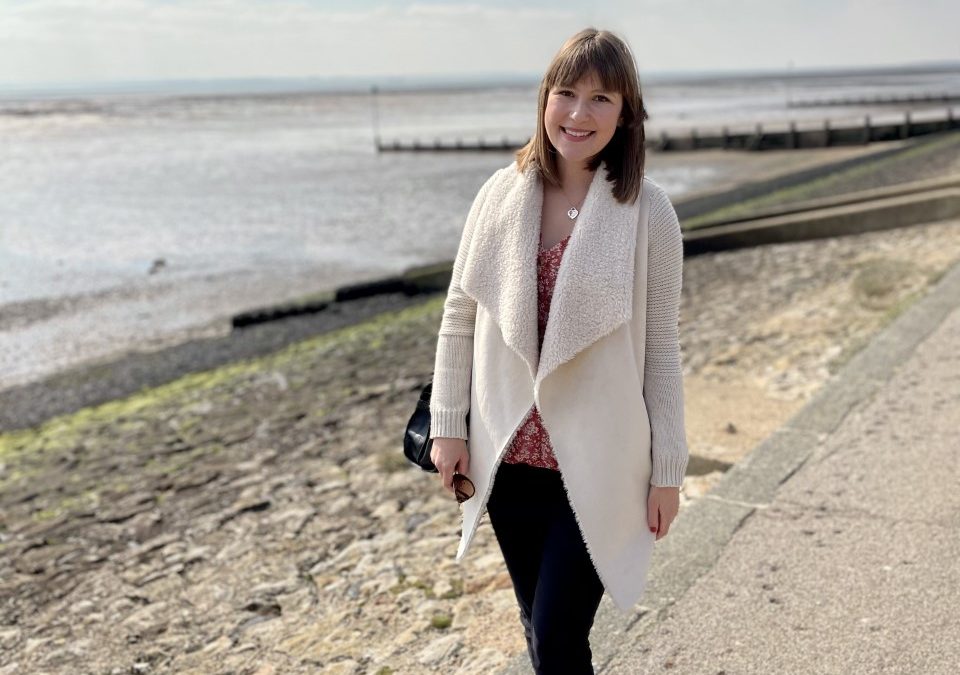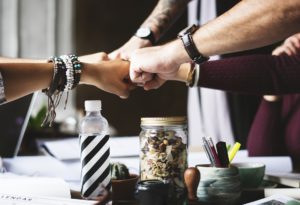My name is Kirsty, I’m 29 years old and I was eventually diagnosed two years ago with non-radiographic axial spondyloarthritis, after suffering with debilitating back pain since I was teenager.
My 8 year journey to diagnosis
When I was 19 years old, I picked up a heavy box awkwardly and injured my back. At the time I didn’t think it was anything to worry about and being young, just assumed I’d pulled my back and it would go eventually. How wrong I was…
The pain started to get gradually worse, to the point where it made me physically sick. I started to lose some function in my left leg and big toe; and it would give way, meaning that I would randomly fall over. My leg became increasingly numb but some of the pain seemed to get better the more I moved around.
I was later referred by my GP to an orthopaedic spine surgeon where they arranged for me to have an X-ray and an MRI covering the full spine, SI joint and hip. (I remember being in the machine for nearly an hour and a half listening to ‘Radio 1’s Big Weekend’!)
The results showed that I had herniated some discs in my lower back, had hip cam impingements, sacroiliitis, torn hip cartilage and bursitis.
Over the course of around 8 months, I had 3 sets of injections into my lower spine, SI joints and hips. On the last set of injections when I came round from the anaesthetic, the surgeon said to me that I had some inflammation around my SI joint. He wanted to refer me to a rheumatologist to rule out anything else.
I underwent blood tests, which came back normal and a physical examination. I was then sent for a Nuclear Bone Scan.
I received a call asking me to come back into the hospital, as they had found something on my scan. I still had active inflammation in and around my SI joints and I was told to take Ibuprofen and try swimming.
I left there feeling worried and not very supported, as I did not know what was going on or what was causing it.
Over the next few months, I had physio and hydrotherapy, which built up the power in my leg and toes, however my pain started to return as the injections wore off. I started developing groin and hip pain as well when walking, which used to make me cry with how much it hurt. I decided to take myself back to the GP who referred me to a rheumatologist at a local hospital.
It took around 12 weeks, but I managed to get an appointment where my treatment really started. I underwent investigations, scans and was started on different medications to see what worked. I also started to develop some gastro problems and was diagnosed with Irritable Bowel Syndrome.
It was not until I was 27 that I was asked by a consultant if I knew what was wrong with me. My answer at the time was ‘no’. People had always told me it could be AS or something related but I wasn’t 100% sure, as where it isn’t always clear on scans it can cause such a delay in diagnosis. I was told that as the damage and inflammation around my SI joint were only visible on MRIs and not X-Rays and where the degree of damage was low, they said I had non-radiographic axial SpA.
I was started on biologics, as I had tried several other medications and they had not worked. Since being on biologics I have found that my pain is more manageable. Don’t get me wrong, I still have times where I flare, but the amount of flares I have is lower than before I started them.
How lockdown helped me feel supported and accept my condition
Before we were put into lockdown for the first time back in March 2020, I really struggled with believing that I had something wrong with me. I thought it was in my head and that other people with mechanical back pain experienced what I do, and that I was just weaker than others. This therefore really affected my anxiety.
It was not until I had to shield that I really started to want to raise awareness about axial spondyloarthritis. So many people I talk to have never heard of it before and the understanding of what was wrong with me was low.
It wasn’t just back pain or having ‘a bit of a bad back’.
People did not seem to understand why I was immunosuppressed either and I wanted to inform others about this.
During lockdown I started taking part in Pilates virtually with ‘Animated Physio’ to try to strengthen my core and also started walking around my garden to keep my stiffness at bay (I wore some of the grass out in the end!).
NASS have always been a great comfort to me, answering my concerns and offering me advice when I’ve felt helpless. I really wanted to be able to give back to them, so I decided to take part in the ‘Walk for Us’ challenge at the end of October 2020. I was able to walk 10k with my husband when we were able to get away to Cornwall for our holiday and raise some money for the charity by doing this. I felt so happy and proud that I managed to achieve it, as sometimes walking short distances can cause me a great deal of pain. I was also very grateful to all the people who donated to my challenge. I raised far more than I ever had expected to.
After the walk I really enjoyed being able to speak about AS and NASS, so I decided to create an Instagram page called @kirstysbackstory to try to educate people and also to connect with others who suffer from the same condition or other chronic illnesses. I have learnt so much from this platform about chronic conditions that I did not know before.
I have connected with some amazing, strong, kind and supportive people who have been there for me throughout.
These people have also helped me to feel confident in myself. I am quite a self-conscious person and find that on high pain days I sometimes need to use a stick or find I limp. This used to leave me feeling a bit embarrassed, but since having met so many other people with similar conditions and seeing how amazingly they deal with things and how supportive they are, this has made me feel much happier in myself.
I have even made some new friends who I know I will stay in contact with once we are through lockdown. One of my new friends also has AS and we speak on the phone regularly, offering each other support and advice. This has also led us to realise that we have lots of other things in common and I am very grateful for this.
My Pilates teacher Anna asked if I would like to take part in a live talk about my diagnosis on her Instagram. I really enjoyed doing this, and the support and kind words I received were amazing.
Having AS can feel extremely lonely at times, but it’s ironic really that at a time where we could feel especially isolated, I was able to feel much less alone because people understood what I was going through. That honestly meant the world to me and still does.
You can follow Kirsty on her Instagram page for some support and positivity!



